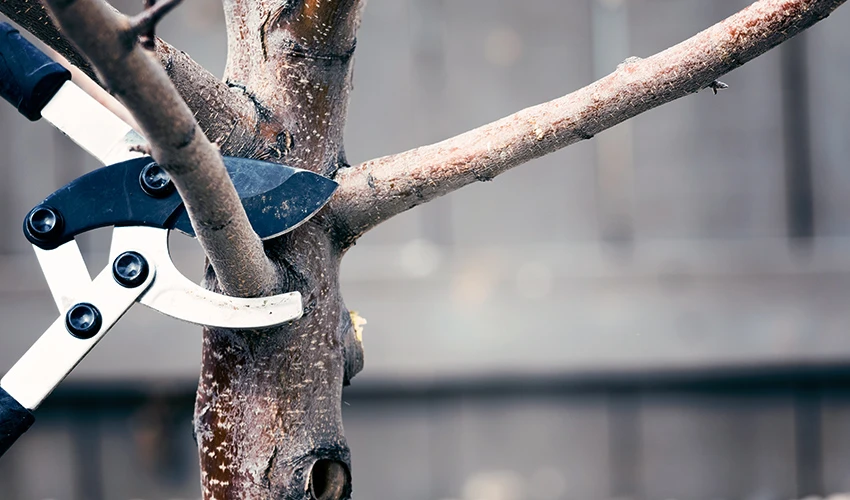Pruning Trees in the Winter
While each type of tree has unique requirements for optimal health and growth, most will benefit from tree care during the winter months, including pruning. Carrying out this practice during the dormancy period is commonly used to ensure vigorous growth in the spring, but regardless of whether you need to remove unhealthy or dead branches, encroaching limbs, or want a better harvest, pruning can help. Read on to learn everything you need to know about pruning trees in the winter courtesy of the landscape experts at The Grounds Guys®.
When is the Best Time to Prune Trees?
The short answer to the question "Is it OK to prune in the winter?" is "yes". In most situations, winter is the optimal time for pruning, after the tree has entered a state of dormancy and most of the leaves have fallen. Once the branches and limbs are exposed it is much easier to observe the structure of the tree and may help to identify areas of concern that may otherwise remain unseen.
Fruit trees and varieties including bald cypress, honey locust, juniper, poplar, and spruce trees all respond well to winter pruning, but sap-producing trees such as birch, elm, maple, and walnut are better left until late summer or early fall due to seepage.
How to Prune Trees in the Winter
You will need:
- Gloves
- Hand pruner
- Handsaw
- Loppers
- Protective/warm clothing and eye wear
- Shears
Which tools you use will depend on the diameter of the branches you wish to remove. Before you begin, examine the tree to determine a suitable course of action, taking note of any dead or dying limbs.
Begin pruning by removing smaller branches first in order to thin, shape, or reduce their numbers:
- Take your hand pruners and make a clean, diagonal cut one-quarter of an inch above where a bud faces outwards from the plant.
- Make cuts at a 45-degree angle to discourage disease or water damage.
- Keep in mind pruning will encourage new growth in the direction of the cut.
To remove large branches or limbs:
- Larger branches should be cut in stages to prevent injury to yourself or the tree.
- Make a series of three separate cuts using your handsaw, beginning with a cut halfway through the underside of the limb, approximately 18 inches from the trunk of the tree.
- Once complete, move to the top of the branch and begin cutting approximately one inch further out from the cut on the underside, sawing through to remove the limb.
- Make your final cut at a 45-degree angle just outside of the branch's collar, close to the trunk of the tree.
As with any do it yourself project, know your limits, and be sure to call the experts at The Grounds Guys for professional assistance with pruning services or other year-round landscaping needs.
Benefits of Winter Tree Care
Pruning trees in winter comes with a number of benefits, which include:
- Avoid the spread of pests or diseases, which are more active during the spring and summer.
- Free up valuable time in the spring to put towards other outdoor projects.
- Less stress on trees, allowing time for pruning cuts to heal before warm weather insects and pathogens may be introduced.
- Eliminate damage in the drop zone beneath the tree once the ground has frozen.
For all your cold-weather landscaping needs including winter pruning or snow and ice management, call The Grounds Guys at (888) 929-8188 or contact us online today!
Did you know? The Grounds Guys is a Neighborly company. Learn more at Neighborly.com.
 Click to call
Click to call


